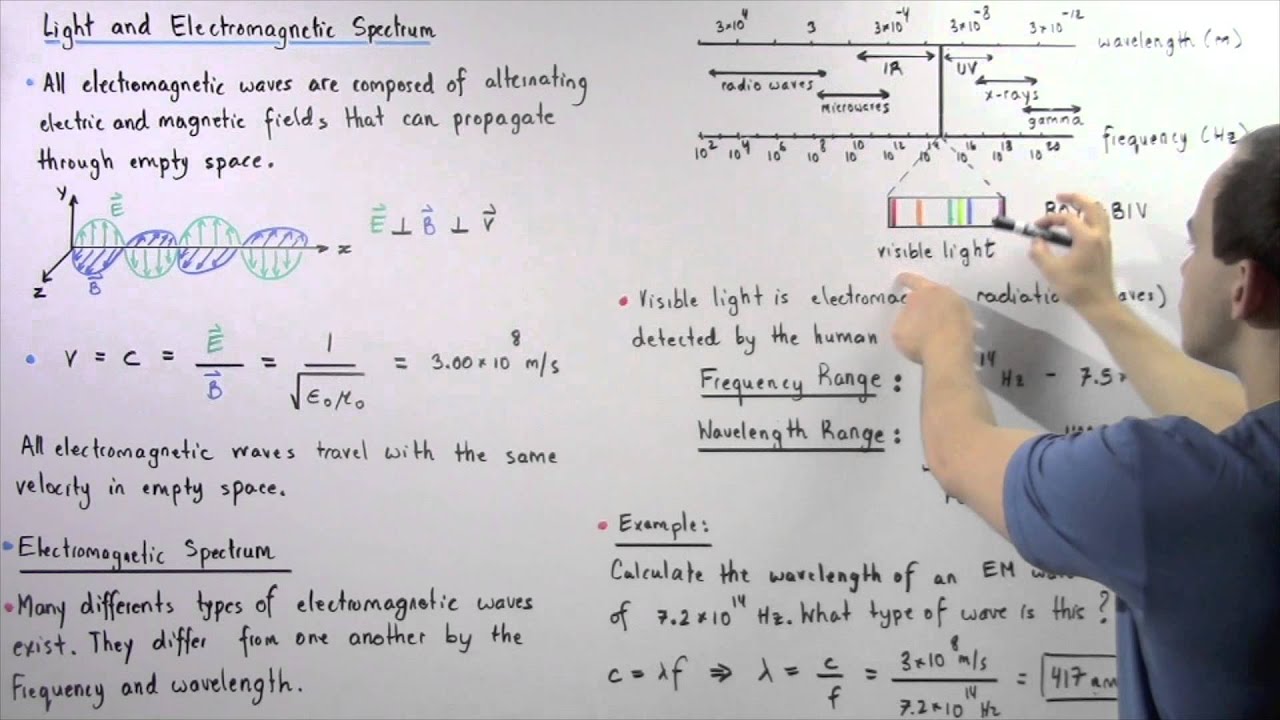Electromagnetic radiation refers to the waves that travel through space carrying electromagnetic radiant energy. These electromagnetic radiations consist of electromagnetic waves which include electric and magnetic fields oscillating perpendicular to each other and perpendicular to the direction of propagation of the waves. These waves are transverse in nature. These waves travel with the speed of light in vacuum.
The range of all the electromagnetic radiations is known as the electromagnetic spectrum. The electromagnetic spectrum and electromagnetic waves include radio waves, microwaves, infrared rays, x-rays, gamma rays, visible light and ultraviolet light. The position of the electromagnetic waves within the electromagnetic spectrum is characterized by the difference in its frequency of oscillation or the changes in its wavelength.
Electromagnetic waves are emitted by the acceleration of charged particles. Electromagnetic waves energy and momentum from the source and transmit it to the particles they interact with.
Basic Properties of Waves
- Crest and Trough: The highest point on the wave is called the crest and the lowest point is called the trough.
- Amplitude: The distance from the crest to the waves central axis is called the amplitude.
- Wavelength: The wavelength is the horizontal distance between two crests or two troughs.
- Period: Time period is the length of time taken for one wavelength to pass through the given point in space.
- Frequency: It is the number of full wavelengths that pass through the given point in one second. The SI unit for frequency is Hertz.
Characteristics of Electromagnetic Waves
- Electromagnetic waves are transverse waves
- They travel with the speed of light in the vacuum which is approximately 3×108 m/s.
- Electromagnetic waves are non-mechanical waves. It does not require a material medium for propagation.
- The electric field and magnetic field in an electromagnetic wave are in phase with each other. The ratio of the amplitude of the electric field and the magnetic field gives the value of the speed of light.
- The energy that is carried by the electric field and the magnetic field in electromagnetic waves are equal.
Electromagnetic Spectrum and Its applications
- Radio waves transmit energy. Therefore it is used in the communication system.
- Electromagnetic radiations are the foundation for the working of RADAR.
- Ultraviolet rays are used to destroy germs and bacteria from various sources.
- Forged banknotes can be detected using UV rays.
- Microwaves are used for cooking purposes.
- X-rays are used for security checks in airports.
- X-rays pass through the flesh and take images of the bones. Therefore it is used by doctors for various medical purposes.
- Gamma rays are used in the treatment of cancer.
- Visible light allows us to see different colours.
Magnetic Permeability
The increase or decrease of the magnetic field inside a material when compared to the magnetizing field of the location in which the material is present. Magnetic permeability is the ratio of magnetic flux density (B) within the material to the magnetic field strength (H) of the magnetising field. Magnetic flux density (B) is the magnetic field within the material. Magnetic flux density is the magnetizing field produced by the electric current flow through the coil.




